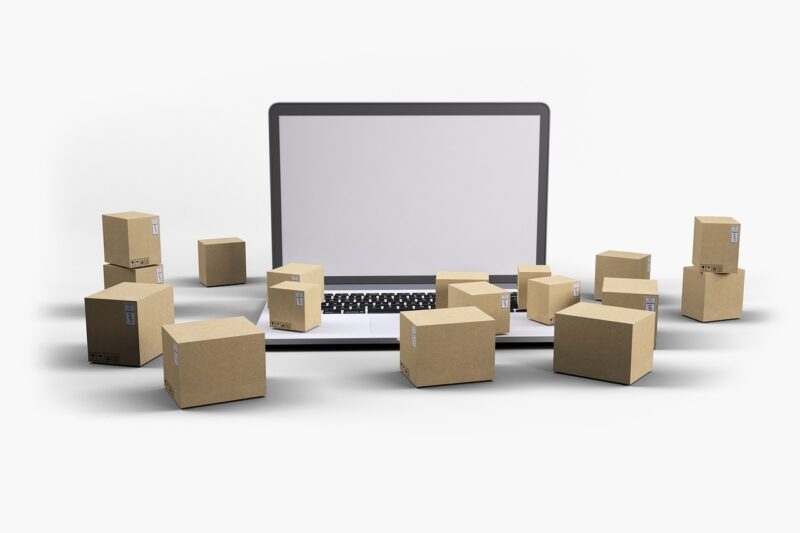
The e-commerce revolution has transformed the retail landscape, reshaping how consumers shop and businesses operate. With the rapid growth of online shopping, traditional brick-and-mortar stores are grappling with unprecedented changes, adapting to consumer preferences that lean heavily towards digital platforms. As we navigate through this significant shift, it’s crucial to understand how e-commerce is influencing various aspects of retail, from consumer behavior to business operations and overall market dynamics.
1. The Rise of E-commerce: A Historical Perspective
E-commerce has existed for decades, but its growth has accelerated dramatically over the last 20 years. The advent of the internet in the 1990s laid the groundwork for online shopping, but it wasn’t until the early 2000s that significant changes began to materialize. E-commerce giants like Amazon and eBay emerged, setting new standards for customer service, product variety, and delivery speeds.
By 2010, e-commerce sales began to skyrocket, and consumers became more comfortable with online transactions, fueled by advancements in technology and secure payment systems. Today, e-commerce is valued at trillions of dollars globally, accounting for a significant portion of total retail sales. This growth has forced traditional retailers to rethink their strategies and adapt their models to meet changing consumer demands.
2. Changing Consumer Behavior
One of the most significant impacts of e-commerce on retail is the shift in consumer behavior. Today’s shoppers are more informed, tech-savvy, and impatient than ever before. Here are some trends that exemplify this transformation:
- Convenience Over Everything: Consumers want to shop whenever and wherever they choose, leading to a preference for online shopping over traditional retail. E-commerce provides the convenience of 24/7 shopping, making it exceptionally appealing to busy individuals.
- Price Comparisons: With the ability to compare prices across different platforms instantly, consumers are more likely to seek out the best deals, affecting how businesses price their products and promotions.
- Personalized Shopping Experiences: Data analytics allows e-commerce platforms to offer personalized recommendations based on consumers’ previous shopping behavior, influencing purchasing decisions and enhancing customer satisfaction.
- Social Media Influence: The rise of social media has also amplified product exposure. Consumers often discover products through social channels, making platforms like Instagram and TikTok powerful marketing tools for retailers.
These changing preferences are compelling retailers to innovate and adapt their strategies in ways they have never had to before.
3. The Digital Transformation of Retail
As e-commerce continues to grow, so too does the need for retailers to digitize their operations. This transformation involves:
- Omni-channel Strategies: Successful retailers are adopting omni-channel strategies that integrate online and offline experiences. This means offering seamless transitions between shopping in physical stores and online, including buy online, pick up in-store (BOPIS) services.
- Enhanced Customer Service: Retailers are using chatbots and AI-driven customer service tools to provide faster responses to inquiries, ensuring customers receive instant support whenever needed.
- Advanced Inventory Management: E-commerce requires sophisticated inventory systems that provide real-time tracking and management to prevent overstocking or stock-outs, enhancing operational efficiency.
- Integration of Technology: Retailers deploy VR (Virtual Reality) and AR (Augmented Reality) technologies to create immersive shopping experiences, allowing customers to visualize products before purchasing.
These digital advancements are essential for retailers aiming to meet modern consumer expectations while improving profitability.
4. The Impact of Mobile Commerce
Mobile commerce (m-commerce) is another significant player in the e-commerce sector, enabling consumers to shop directly from their smartphones or tablets. As mobile technology continues to evolve, so does its impact on retail:
- Accessibility: M-commerce facilitates easy access to online shopping pages, allowing consumers to purchase products from anywhere, whether commuting, at home, or on vacation.
- Enhanced User Experience: Applications provide a user-friendly interface that simplifies the shopping process, from browsing products to completing transactions with minimal friction.
- Mobile Payment Solutions: Innovations in mobile payment systems, like Apple Pay and Google Wallet, make it easier for shoppers to complete transactions securely and conveniently.
Retailers that prioritize a mobile-first approach are more likely to engage customers effectively and capture a larger market share.
5. Sustainability and E-commerce
As e-commerce grows, so does the scrutiny of its environmental impact. Consumers are increasingly concerned about sustainability, pushing retailers to adopt eco-friendly practices:
- Reduction in Packaging Waste: E-commerce businesses are recognizing the need for responsible packaging options and many are opting for minimal and recyclable materials.
- Carbon Neutral Shipping: Forward-thinking retailers are rolling out carbon offset programs for deliveries, aiming for sustainable shipping solutions that align with eco-conscious consumer demand.
- Ethical Sourcing: More brands are emphasizing ethically sourced materials and fair labor practices in their supply chains, appealing to the values of modern shoppers.
Sustainability in e-commerce not only enhances brand loyalty but also paves the way for a more responsible approach to consumption in the retail space.
6. Future Trends in E-commerce
The evolution of e-commerce is far from over. Here are some trends to watch for in the coming years:
- Artificial Intelligence (AI) Integration: AI will become increasingly relevant in personalizing shopping experiences, automating customer service, and enhancing supply chain efficiencies. Predictive analytics will optimize inventory and demand forecasting, which can lead to higher customer satisfaction and reduced costs.
- Increased Focus on Customer Experience: Businesses will prioritize enhancing customer experience, not just to retain existing customers but to attract new ones. This includes offering tailored experiences, loyalty programs, and quick delivery options.
- The Rise of Subscription Services: Subscription-based models will continue to challenge traditional retail. Customers appreciate the convenience and personalization these services offer, leading to sustainable revenue streams for businesses.
- Global Expansion: E-commerce will continue to grow across international markets, aided by advancements in logistics and digital payment methods. As markets become more interconnected, retailers will have the opportunity to capture new customers worldwide.
By staying ahead of these trends, retailers can ensure they adapt to the ever-evolving e-commerce landscape, enabling them to thrive in an increasingly digital world.
Conclusion
The e-commerce revolution is reshaping retail in profound ways, fundamentally changing how consumers shop and how businesses adapt to meet their needs. As we move forward, the digital transformation of retail will only continue to accelerate, presenting both challenges and opportunities for retailers. Embracing innovation, prioritizing customer experience, and committing to sustainability will be critical for success in the future of retail. Those who leverage these changes effectively will not only stay competitive but also thrive in this new era of commerce.
Whether you’re a consumer or a retailer, understanding the impact of e-commerce allows for better decisions in a rapidly changing environment. With technology driving new consumer behaviors and expectations, now is the time to embrace this e-commerce revolution and shape the future of retail together.





